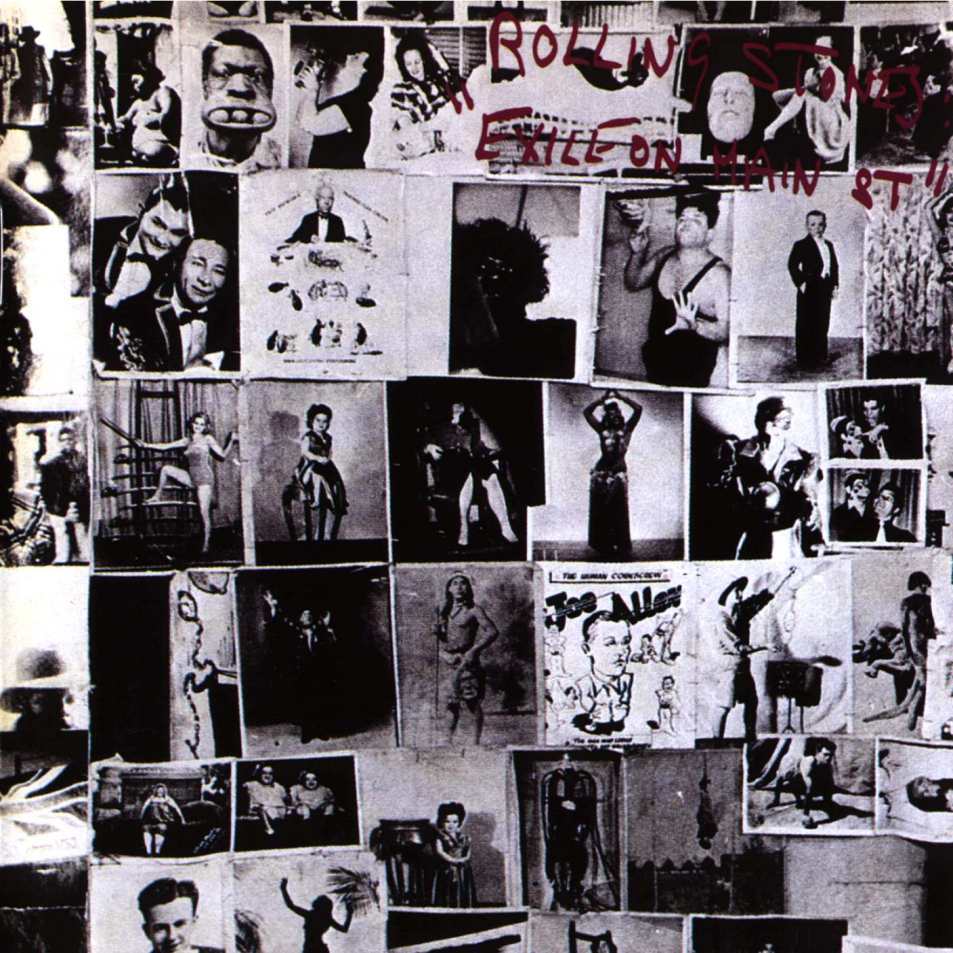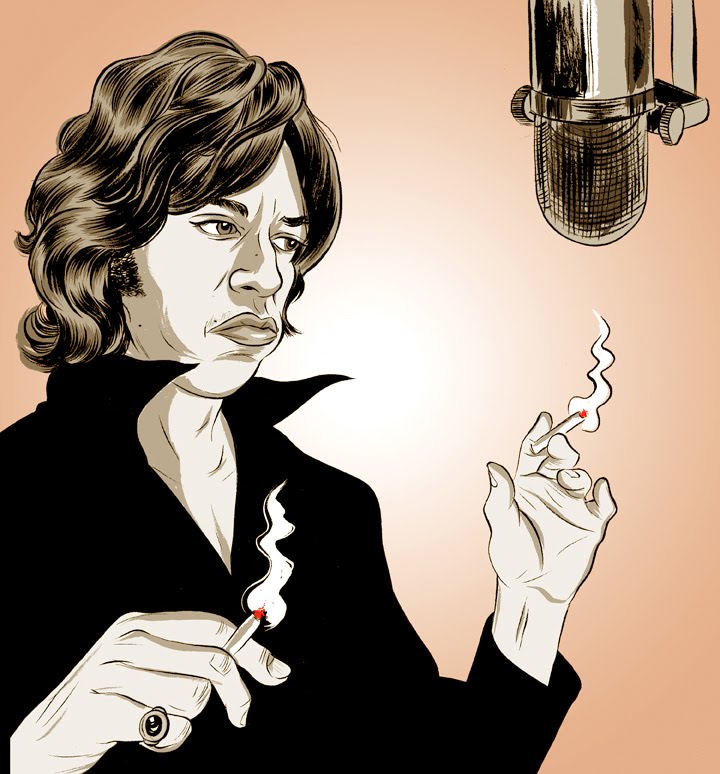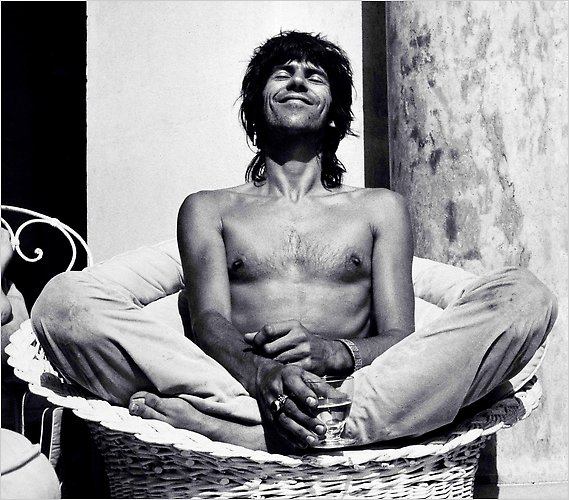
PW: Hangers-on aside, these were not the most ideal of recording conditions—the band hunkered down in a dank, sweaty basement for all-night sessions that were prone to power cuts and instruments detuning due to the oppressive humidity. They rarely saw daylight. You can hear it on the record as vocal tracks bleed into one another, the mix often muddy, Jagger frequently sounding as if he’s singing with a mouthful of molasses. And yet, out of chaos came a certain raffish, ragged glory, a triumphant last hurrah, before ennui, cynicism and nasty habits got the better of the band. Above all, Exile remains the high-water mark of the Stones’ love affair with America. Their friend Gram Parsons (who was a house guest during this period and whose influence is all over the record), frequently talked of creating “Cosmic American Music,” the irony being that his dissolute English buddies beat him to it. While the outside world turned to Glam and Prog Rock, the Stones retreated inward, looking toward a romanticized America—one of down-home juke joints, late-night dives, fetid swamps and dusty highways (it’s no mistake they hired The Americans photographer Robert Frank to design the album’s cover). MORE
NEW YORK TIMES: This performance represents to me the sound of “Exile” in idealized form: a dark, dense, loosely played, semiconscious tour through American blues, gospel and country music, recorded in a basement in France. “Exile” was made around the Stones’ creative peak and in unusual  circumstances: they were tax exiles, forced to live away from home. It is often called one of the best rock records ever made, and framed as an after-the-fact concept album: a wise horror show, an audio diary of rock stars finally facing the rigors of marriage, children and addiction. (“ ‘Exile’ is about casualties, and partying in the face of them,” the critic Lester Bangs wrote in 1972. “The party is obvious. The casualties are inevitable.”) The notion of the record as story also comes from the strong documentary images around its creation— Dominique Tarlé’s black-and-white pictures of the Stones at Villa Nellcôte, shirtless and dazed in the stifling air of a basement in the South of France. These images dot the 64-page booklet and the DVD film included in the reissue’s deluxe edition and have been part of the avalanche of press around the reissue, released by Universal on Tuesday. MORE
circumstances: they were tax exiles, forced to live away from home. It is often called one of the best rock records ever made, and framed as an after-the-fact concept album: a wise horror show, an audio diary of rock stars finally facing the rigors of marriage, children and addiction. (“ ‘Exile’ is about casualties, and partying in the face of them,” the critic Lester Bangs wrote in 1972. “The party is obvious. The casualties are inevitable.”) The notion of the record as story also comes from the strong documentary images around its creation— Dominique Tarlé’s black-and-white pictures of the Stones at Villa Nellcôte, shirtless and dazed in the stifling air of a basement in the South of France. These images dot the 64-page booklet and the DVD film included in the reissue’s deluxe edition and have been part of the avalanche of press around the reissue, released by Universal on Tuesday. MORE
TIMES ONLINE: Few albums are as soaked in the mythology of sex, drugs and rock’n’roll as Exile on Main St by the Rolling Stones. Although its woozy, raw sound has seen it hailed as one of the greatest records ever made, the music itself has tended to be overshadowed by the lurid tales of Bacchanalian excess that accompanied its creation. Now a new film that screened at the Cannes Film Festival yesterday has returned a surprising additional element to the story: children. Stones in Exile, which is also showing on BBC One on Sunday night, concentrates on the band’s epic six-month residence at Villa Nellcote, in Villefranche-sur-Mer on the Cote D’Azur in 1971. Sixties optimism had foundered with the killing of one of their fans at a concert in California and the band was regrouping after leaving England and its 93 per cent top tax rate. As Sir Mick Jagger explained at the premiere, they had no idea if their popularity at home would ever recover. “When you leave for tax reasons it’s really not very cool.” Nellcote, a half-hour’s drive up the coast from Cannes, was the rented residence of Keith Richards, Anita Pallenberg and their one-year-old son, Marlon. The band installed their new mobile recording studio in the sweaty, labyrinthine basement and opened up the rooms above ground to a rolling party for a shifting cast of hangers-on, drug dealers, record company executives, backing musicians, groupies, artists and journalists. MORE
NEW YORKER: The ten bonus tracks are another matter entirely. Mick Jagger and the producer Don Was combed through boxes of old tapes to find  completed songs left unreleased at the time, as well as uncompleted sketches. Vocals were added to some. Guitar was added to others. The result is a mini-album of seven new—or at least newish—songs, along with three demos for tracks from the original album. There’s some mystery over what exactly was retrieved from the early seventies and what was added by Jagger and possibly Richards in recent years; there is even a rumor that Mick Taylor added a new guitar track. It seems fairly clear that the bathetic ballad “Following the River,” in which said river “joins hands with the sea,” is a twenty-first century Jagger lyric over mostly old music. The others seem more equivocal. But what does it matter? People can complain about the new songs being synthetic, but that suggests that the old songs were organic. They were famously anything but. The Stones camp in 1971 was divided between burgeoning addicts—Richards and Taylor, but also most of the production team (Jimmy Miller, Andy Johns) and the sidemen (Bobby Keys)—and Jagger, Bill Wyman, and Charlie Watts, who were more moderate in their substance abuse. The original Nellcôte sessions, which took place at a nineteenth-century villa (and former Nazi headquarters) that Keith Richards rented on the French Riviera, moved in fits and starts, and eventually gave way to more structured sessions overseen by Jagger in Los Angeles. Purist hand-wringing seems to run counter to the original spirit of the album, not to mention that it interferes with any actual enjoyment of the music. MORE
completed songs left unreleased at the time, as well as uncompleted sketches. Vocals were added to some. Guitar was added to others. The result is a mini-album of seven new—or at least newish—songs, along with three demos for tracks from the original album. There’s some mystery over what exactly was retrieved from the early seventies and what was added by Jagger and possibly Richards in recent years; there is even a rumor that Mick Taylor added a new guitar track. It seems fairly clear that the bathetic ballad “Following the River,” in which said river “joins hands with the sea,” is a twenty-first century Jagger lyric over mostly old music. The others seem more equivocal. But what does it matter? People can complain about the new songs being synthetic, but that suggests that the old songs were organic. They were famously anything but. The Stones camp in 1971 was divided between burgeoning addicts—Richards and Taylor, but also most of the production team (Jimmy Miller, Andy Johns) and the sidemen (Bobby Keys)—and Jagger, Bill Wyman, and Charlie Watts, who were more moderate in their substance abuse. The original Nellcôte sessions, which took place at a nineteenth-century villa (and former Nazi headquarters) that Keith Richards rented on the French Riviera, moved in fits and starts, and eventually gave way to more structured sessions overseen by Jagger in Los Angeles. Purist hand-wringing seems to run counter to the original spirit of the album, not to mention that it interferes with any actual enjoyment of the music. MORE
RELATED: The Rolling Stones are on course to have their first No 1 album for 16 years, sales figures show. A revamped version of one of the band’s most famous albums – Exile On Main Street – leads the battle to top this weekend’s chart. But figures from The Official Charts Company show it’s a tight race, with the veteran rock act just 1,000 copies ahead of Faithless and their album The Dance. MORE
[Illustration by ALEX FINE/photo by DOMINIQUE TARIE]
